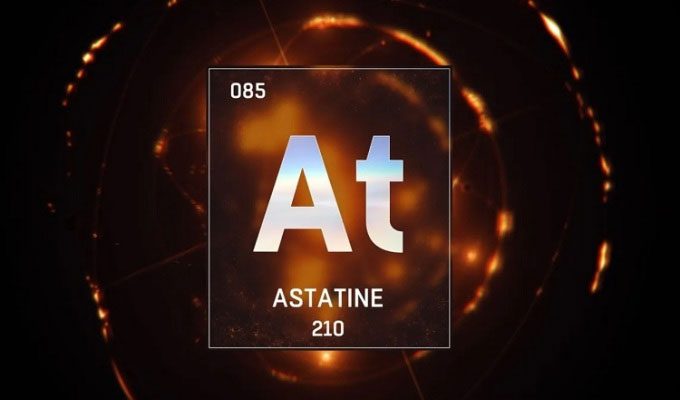Astatine is the rarest naturally occurring element in the Earth’s crust, with less than 25 grams present on the entire planet at any given time.
Astatine is so rare that scientists still do not know basic information about this element, such as what it looks like. Astatine is named after the Greek word “unstable.” It is a radioactive element with a half-life of just over 8 hours, even in its most stable form, astatine-210. This means that even if you were to collect a small amount, after 24 hours, only 1/8 of it would remain due to astatine decaying into bismuth-206 or polonium-210.

Researchers still do not know basic information such as the appearance of astatine. (Image: iStock).
Most astatine isotopes have half-lives of less than one second. The radioactivity of astatine is so high that if you had a sufficient amount to observe with the naked eye, it would evaporate under its own heat. Scientists can only work directly with astatine through artificial production using nuclear reactions, typically by bombarding bismuth-209 with alpha particles.
As a result, most of what we know about this element comes from theoretical research rather than practical experimentation. For example, researchers believe that astatine appears as a black solid because it is located in the halogen column of the periodic table. The heavier the elements in the halogen column, the darker their color becomes. Fluorine is colorless, chlorine is yellow-green, bromine is red-brown, and iodine is dark gray-purple. Therefore, logically, the next element, astatine, would be even darker.
Whether astatine is more metallic or non-metallic remains a controversial question among chemists because it lies diagonally in the periodic table, containing metalloids such as boron and silicon. In chemical reactions, it sometimes behaves like a halogen and sometimes like a metal, making it difficult for experts to classify.
Despite being extremely rare, astatine may have some important practical applications. When the element decays, it emits alpha particles, which are radioactive particles formed from the combination of two protons and two neutrons. For many reasons, alpha particles are highly effective at targeting cancer cells. According to Mehran Makvandi, a radiologist at the University of Pennsylvania’s medical school, astatine emits fewer alpha particles than other isotopes like actinium-225. This element also only emits alpha particles, which are the least harmful type of radiation.
If scientists can attach astatine isotopes to molecules that target cancer cells, they could create cancer treatment therapies that do not harm surrounding tissues. However, due to the extreme rarity and instability of astatine, this is not an easy task.


















































